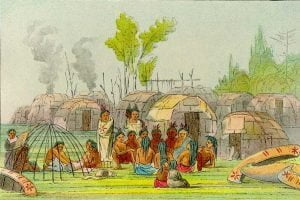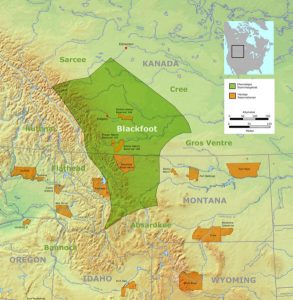Cree Indian Research
Cree (contracted from Kristinaux, French form of Kenistenoag, given as one of their own names). An important Algonquian tribe of British America whose former habitat was in Manitoba and Assiniboin, between Red and Saskatchewan rivers. They ranged northeastward down Nelson river to the vicinity of Hudson Bay, and northwestward almost to Athabasca lake. Archives and Libraries Cree Indian Biographies Bureau of Indian Affairs Cree Indian Cemeteries Cree Indian Census Cree Indian Culture/Customs Cree Culture and Customs (hosted at Cree Nation Culture) Federally Recognized Cree Communities, Canada Recognized Tribes from Indians and Northern Affairs-Canada Genealogy Help Pages Cree Indian History Cree … Read more


